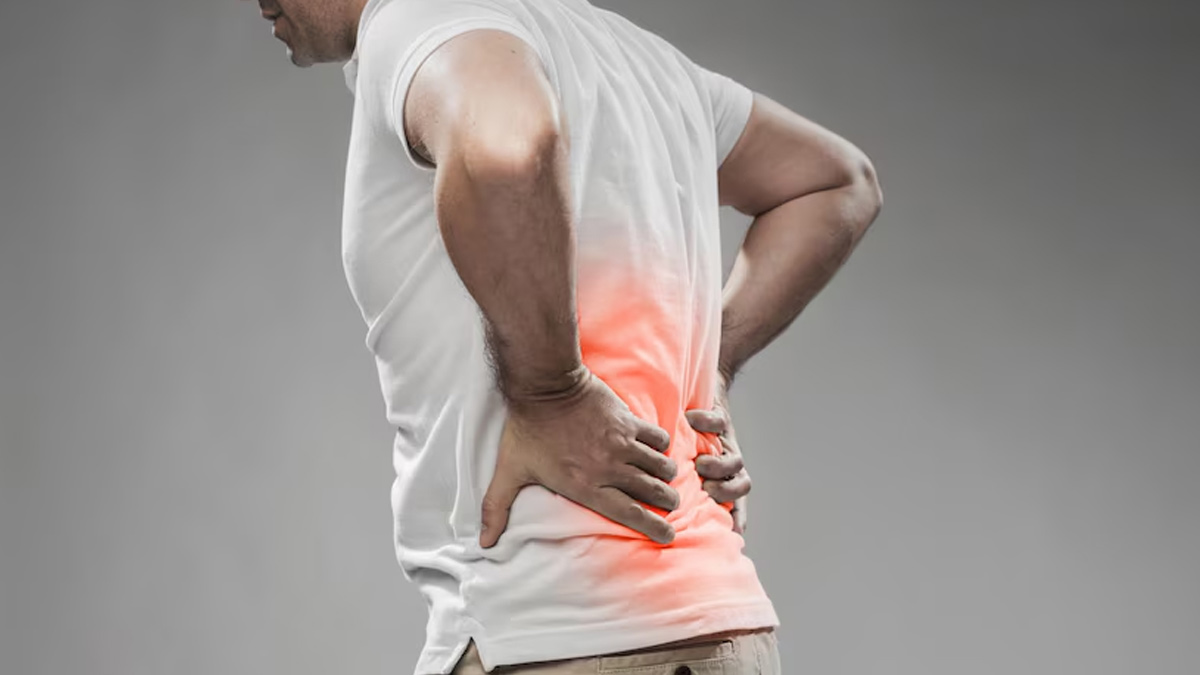
Nowadays, back pain is a common problem suffered by young adults. Improper posture, serving nine hours of shift without moving much and constantly typing can make your shoulders stiff leading to back pain. Another factor can be sleeping positions. If you like to sleep in crooked positions, you are surely inviting back pain.
Table of Content:-
But, at times, this back pain can be a result of a condition called spondylitis and can be misunderstood as back pain which you may think will go away. To dig deeper in this subject, OnlyMyHealth team interacted with Dr Ramkinkar Jha, Chief and Unit Head, Orthopaedics at Artemis Hospital Gurugram.
According to Dr Jha, spondylitis is an umbrella term for a group of chronic arthritis-type diseases that affect the joints of the spine and sacroiliac region. The sacroiliac region includes the pelvis and lower spine. All types of spondylitis involve inflammation of the joints, tendons, and ligaments. Speaking in simple terms, it is a condition in which the immune system attacks the joints, causing inflammation, bone fusion, and excess bone formation. A few types of spondylitis tend to develop in teenagers and young adults.

Common Symptoms of Spondylitis and Back Pain
Some of the common symptoms of spondylitis and back pain include fatigue, stiffness, pain, swelling, urethritis, reduced range of movement, abdominal pain, swelling and pain in joints.
Explaining why spondylitis is misunderstood as back pain, Dr Jha said, “Spondylitis is generally misunderstood as back pain because of its symptoms, like chronic back pain and stiffness, all of which mimic those of common back issues. However, spondylitis is an inflammatory condition affecting the spine, whereas typical back pain may result from muscle strains or injury. The underlying cause and treatment approaches differ, causing the confusion.”
Also read: What Are The Different Types of Spondylitis? Learn About 3 Major Types In This Article
Causes

According to Dr Jha, the exact cause of spondylitis is not known but it has been observed that people carrying the gene human leukocyte antigen B27 (HLA-B27) are more likely to develop this problem. Injury or strain in the spinal region is also responsible for development of this problem to some extent.
Adding further, he said, “The possible causes of back pain include muscle or ligament strain, bulging or ruptured discs, arthritis, osteoporosis and spondylitis.”
How To Differentiate
Dr Jha said, differentiating between the two problems can be tricky because their symptoms are more or less the same. “Physical examination can help in identifying whether it's normal back pain or spondylitis. If the pain in your back persists for a longer period of time and gets worse then you can contact a doctor and get it checked,” he said.
Apart from this, there are some key differences that can help in differentiating between the two. Following is the list of differences by Dr Jha.
Also read: What Is Ankylosing Spondylitis And Why Is It Called Youngster's Disease?

1. Location of Pain: Back pain can occur anywhere in the back, while spondylitis generally affects the lower back and buttocks. It may also involve the neck and upper back in some cases.
2. Nature of Pain: Back pain can be dull, achy, or sharp and may come and go. Spondylitis pain is generally more constant and may worsen with rest, especially in the morning or after prolonged periods of inactivity.
3. Stiffness: Spondylitis typically causes stiffness in the back, especially in the morning or after periods of inactivity. This stiffness may improve with movement but return after rest. Back pain may not necessarily involve stiffness.
4. Other Symptoms: Spondylitis may be accompanied by other symptoms like fatigue, loss of appetite, weight loss, and stiffness in other joints, especially in advanced cases. These symptoms are less common with general back pain.
5. Age and Risk Factors: Spondylitis generally affects younger people, often starting in late adolescence or early adulthood. It's also more common in people with a family history of the condition. General back pain can occur at any age and may be related to factors like muscle strain, injury, or degenerative changes in the spine.
Also watch this video
How we keep this article up to date:
We work with experts and keep a close eye on the latest in health and wellness. Whenever there is a new research or helpful information, we update our articles with accurate and useful advice.
Current Version